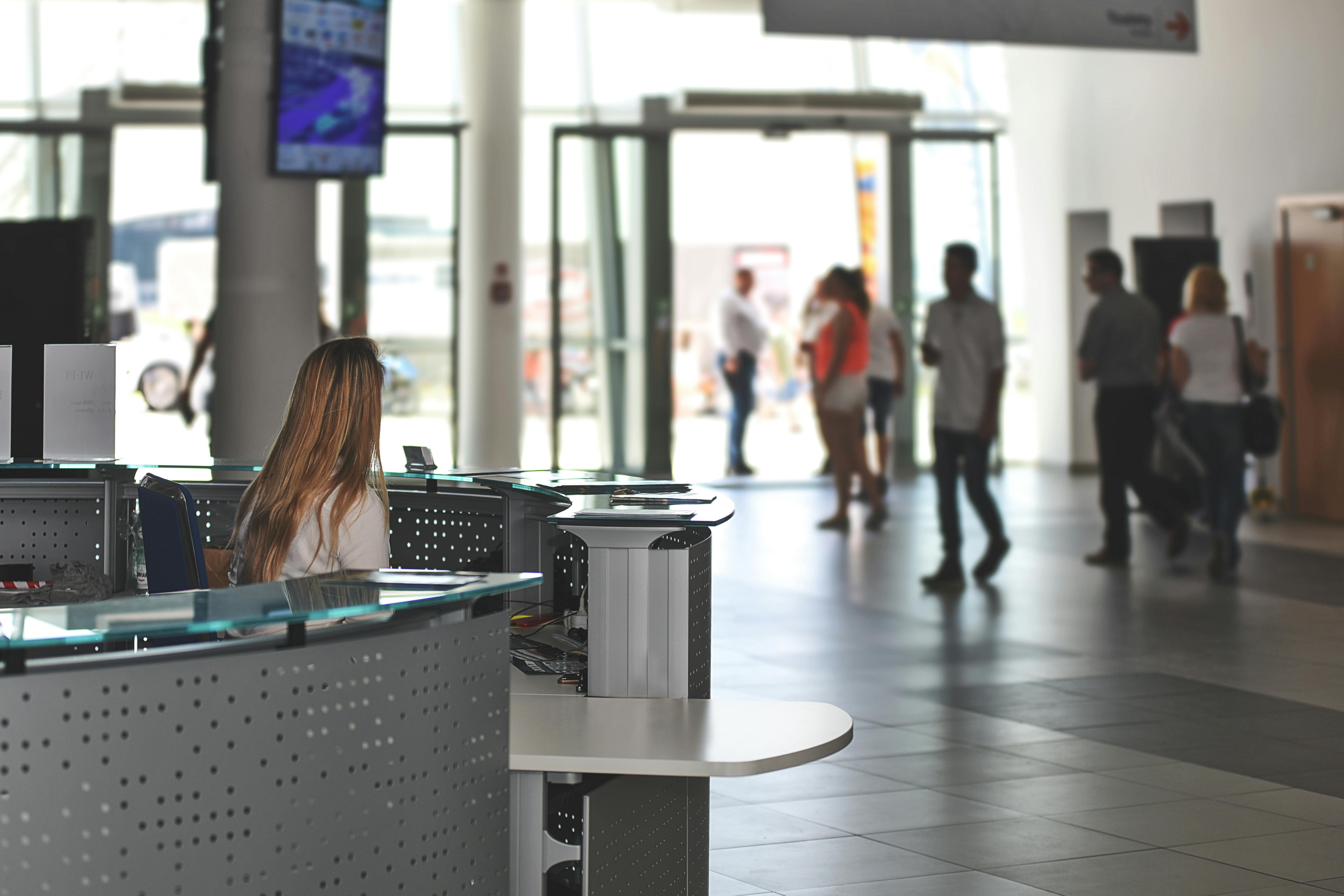From jumping through security checks to strenuous layovers, air travel can often be more of a hassle than an adventure. But, it doesn’t have to be that way. In this article, we’ll explore key ways airlines and airports can make air travel easier by improving passengers’ flight experience. From enhancing security measures without compromising comfort to streamlining the airport experience, we’ll take a look at how to reduce waiting times, improve comfort and amenities, simplify check-in and boarding, provide clear information via technology, and offer better customer service. Ready to get ready set up for your next journey in style? Let’s get flying!
Introduction
Air travel is often quite a stressful endeavor. From long lines at the airport to unexpected delays, it is easy to dread the experience. Fortunately, this state of affairs is subject to change. Airlines and airports have been innovating and improving on their existing services to ensure a smoother, more pleasant flight experience. In this article, we explore various ways in which air travel can be made more accessible and enjoyable. With better planning and more efficient airport facilities, travelers can look forward to an improved flight experience.
The Current State of Air Travel

Air travel today can be a stressful and hectic experience. With long security lines, scheduling conflicts, and delays, it can sometimes feel like an exercise in endurance rather than an opportunity to travel and explore. The sheer number of people traveling around the world has necessitated an increase in airports, planes, and services, but this increased demand still can’t be met as airports struggle to keep up and flight delays are on the rise. Flight attendants’ sense of customer service has also been impacted by the increased number of travelers, making flying more of an inconvenience than an enjoyable experience.
Increasing Security without Compromising Comfort

Airports and airlines strive to provide passengers with a secure flight experience, but that should not come at the expense of comfort. Security measures can be modified to reduce the inconvenience and time burden for passengers without weakening safety. The use of more advanced technology such as facial recognition can reduce the number of times a person is required to show identification, speeding up the check-in process and allowing for a smoother transition from the terminal to the aircraft. Additionally, providing clear communications and formalized procedures establish confidence and respect with customers, further improving the air travel experience.
Streamlining the Airport Experience

Streamlining the airport experience is key in making air travel easier. Airports have the potential to make check-in, security, and boarding processes faster and more efficient. Airlines can also play their part by streamlining the number of steps required to check-in and board flights. Advances in technology now make it possible to automate some of these processes, allowing travelers to save time and have a better overall experience. Additionally, airports and airlines can also provide more amenities to make waiting times more bearable, such as comfortable lounges, snacks, and WiFi access. By improving the airport experience, airlines and airports can greatly enhance the air travel experience for their passengers.
Reducing Waiting Times

Reducing waiting times is integral for improving customer experience. Airlines must consider strategies, such as allowing check-in online, automated bag drops, quick security lines, and streamlined boarding processes. Airports also have a role to play, for example, by improving the quality of waiting areas and providing more flight information on display boards. Thanks to technology, most of these steps can be accomplished in a shorter amount of time, allowing passengers to reach their destination with a minimum of fuss.
Improving Comfort and Amenities

Airline and airports can take several steps to improve the comfort and amenities for their passengers. Introducing power outlets for devices, providing higher quality complimentary meals and snacks, and increasing the variety of entertainment options are all ways to make flight experience more enjoyable. Airlines can also provide comfort items such as blankets and pillows to add a layer of comfort and convenience. Upgrading seating materials, expanding lavatories, and increasing legroom are key components in providing passengers with more comfortable air travel. Additionally, airports can provide better seating and charging opportunities in waiting areas so passengers can relax in greater comfort pre-flight.
Making Check-in and Boarding Simpler

Making check-in and boarding simpler can drastically improve the air travel experience. Airlines can simplify the cumbersome process of checking-in by offering more self-serve kiosks at the airport as well as online options that let passengers check their flight status, add baggage, and even get their boarding pass from the comfort of their own homes. Meanwhile, airports should also introduce more streamlined boarding procedures, such as automated access gates that will make it easier to access both the terminal and the boarding area, as well as using electronic boarding passes for faster verification. By streamlining check-in and boarding, air travel can become a much more pleasant experience for all.
Providing Information through Technology

Providing up-to-date information can significantly enhance a passenger’s air travel experience. Through technology, airlines and airports can offer travelers greater clarity on their upcoming journeys. Through mobile apps and websites, passengers can track their flight status, receive real-time notifications and view the latest information. Additionally, kiosks and other automated solutions can provide quick access to flight information and secure check-in. By utilizing technology, airlines and airports can ensure passengers have the most up-to-date information to make their journey smoother, safer, and more efficient.
Customer Service

Ultimately, customer service in air travel plays a key role in improving the overall experience. Airlines and airports should strive to exceed customers’ expectations by focusing on conversations that instill trust. From proactively addressing passengers’ needs to ensuring their comfort and safety, customer service should provide a personalized approach that always goes above and beyond. Additionally, providing multiple options for communicating with customer service teams can further help ensure a high level of customer satisfaction. By leveraging modern technology, personnel should be able to quickly respond to enquiries and solve problems, while also reducing response time. By prioritizing customer experience, airlines and airports are better positioned to make air travel easier.
Conclusion
In conclusion, air travel is a necessary part of life for many, and it should be as pleasant and efficient as possible. Airlines and airports have a responsibility to make sure passengers have a good flying experience. Changes such as increasing security without compromising comfort, streamlining the airport experience, reducing waiting times, and improving comfort and amenities can make air travel much more enjoyable. Additionally, making check-in and boarding simpler, and utilizing technology to provide passengers with information can create a smoother trip and help create a better overall experience.



Leave a Comment